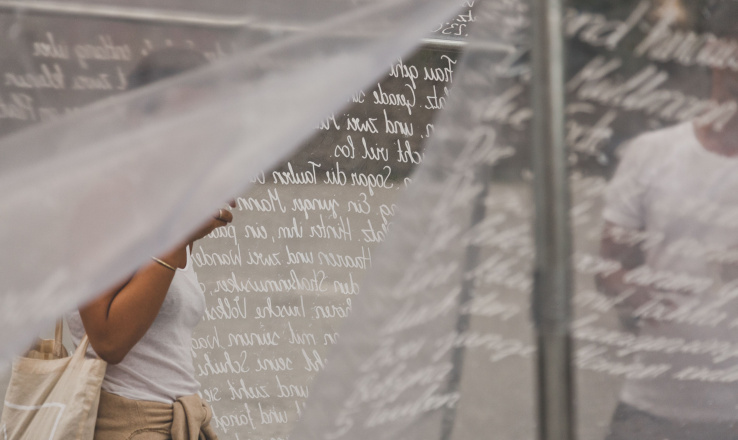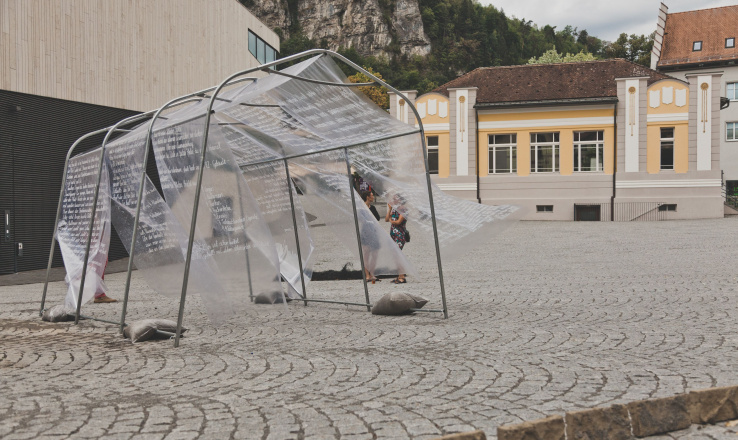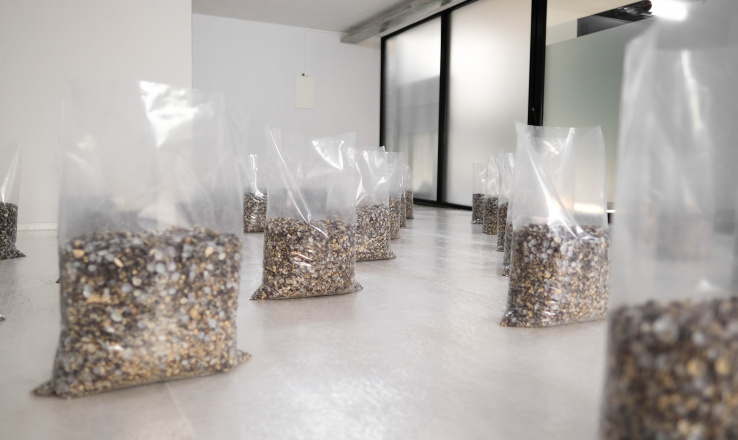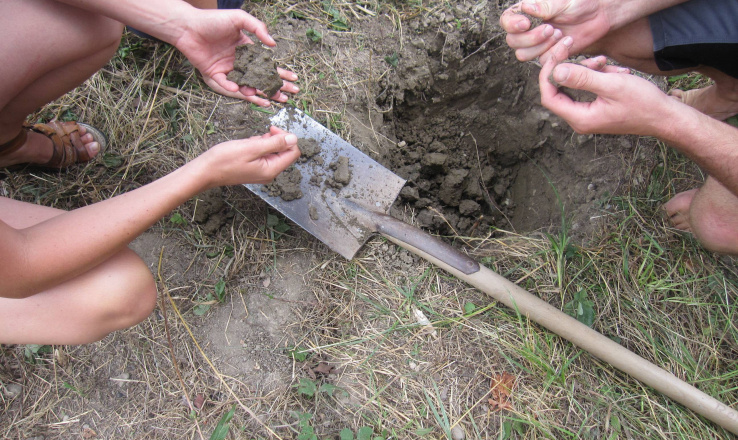Layers. Possible Borders
Layer. Possible Borders deals with natural and culturally rooted boundaries within us: skin as the boundary between body and environment; earth as the fertile layer covering the planet; architectural walls (of division) and national borders. In order to challenge and question these boundaries the artists Alice von Alten, Ursula Gaisbauer, Nora Gutwenger and Nadine Hirschauer travel through Vorarlberg on their search for sites for four different interventions.
Nadine Hirschauer introduces the connecting element between the four interventions – the “skin“ all four artists will live in during their travels: a transparent tent that serves as both a protective skin and a window into the intimate acts of living and sleeping. The thin skin of the tent protects the artists while also exposing them to their surroundings. The tent will be pitched at different sites in Vorarlberg and accompanies the artists‘ other interventions.
Alice von Alten explores the Rhine river as a natural border within the landscape. She focusses on sea shells that wash ashore from places as far away as Southeast Asia and North America. Sea shells, the culturally and philosophically charged epitome of far-away places, becomes an allegory for our lifestyle today. We are expected to be on the move and flexible, which results in a nomadism that is both positive and negative and has both visible and invisible consequences. The washed-up shells von Alten collects are brought to an exhibition space where she arranges, re-arranges, washes, weighs, categorises, moves, packs and even sends them elsewhere.
Ursula Gaisbauer creates tactile snapshots in urban space by asking passers-by to leave a handprint in a specific substance. The substance is a nutrient substance that takes the form of the skin’s surface and simultaneously absorbs its micro-organisms and bacteria. Within a few days, invisible elements of our skin are rendered visible. The hand prints develop into an image inscribed with a lot of information: the last touches, encounters and whereabouts.
Nora Gutwenger explores skin through scars. Scars are a disruption of the homogenous surface of skin. She translates this idea of skin into the earth, which she scars by digging a pit. Gutwenger creates a specific boundary as matter is moved. Shaped as a circle, the collaboratively dug pit has an island in its middle. Space is created, but at the same time also isolation.



